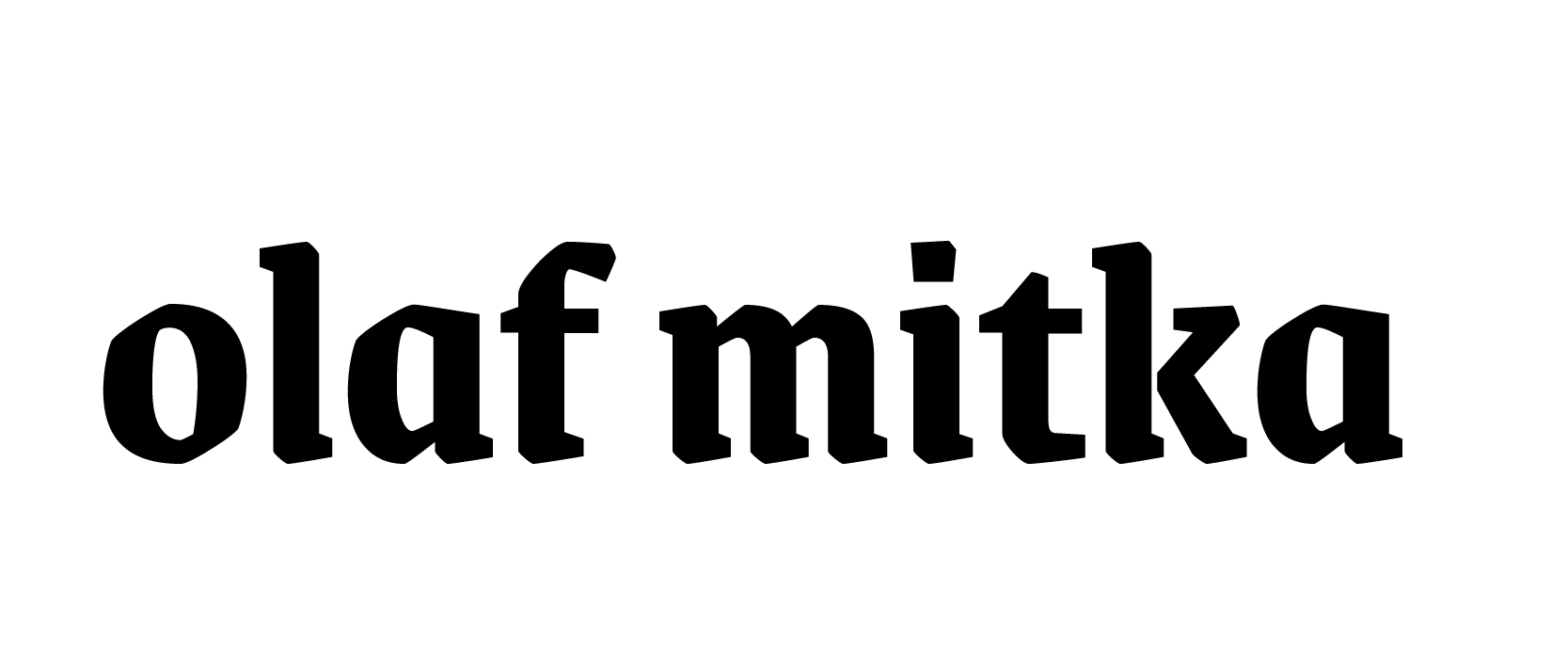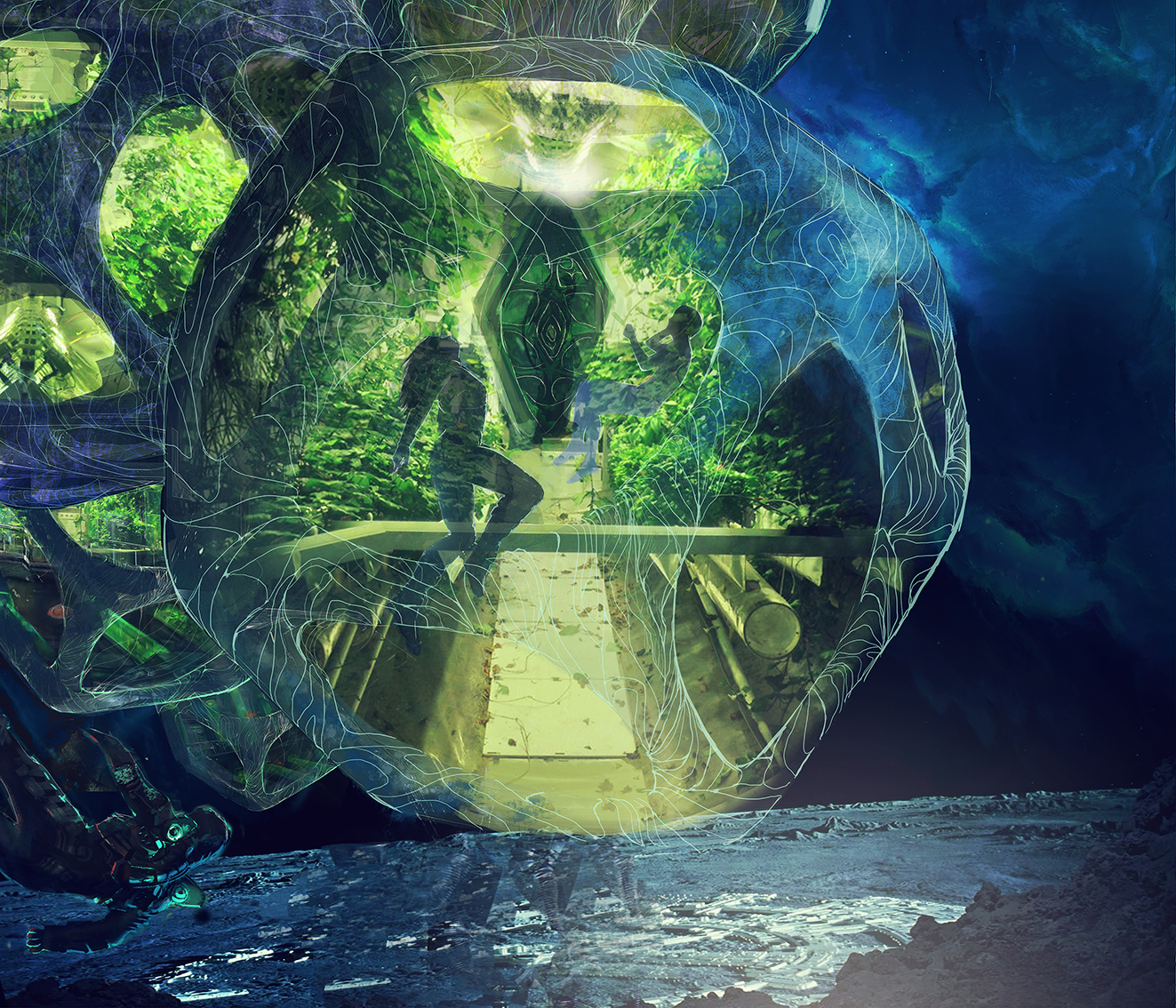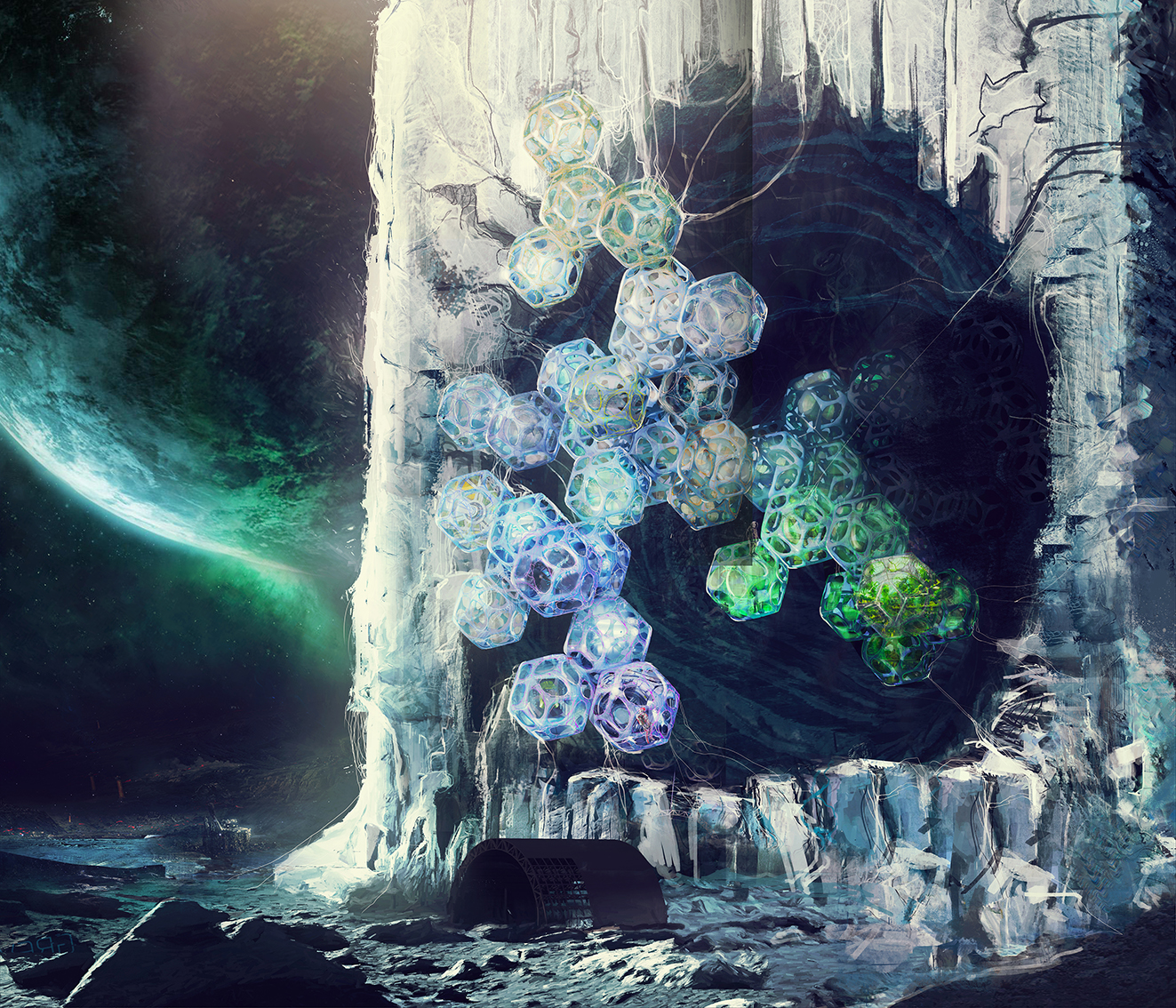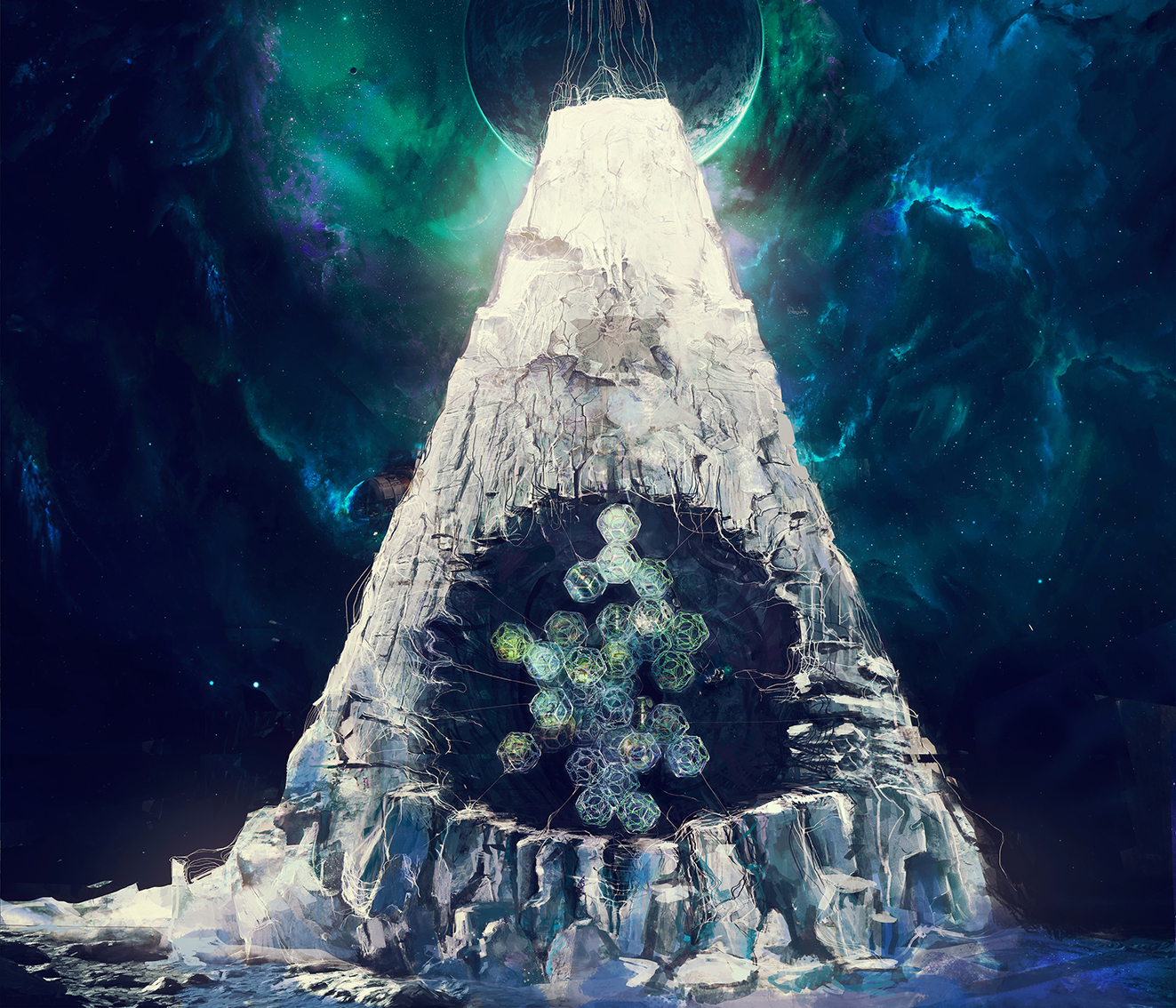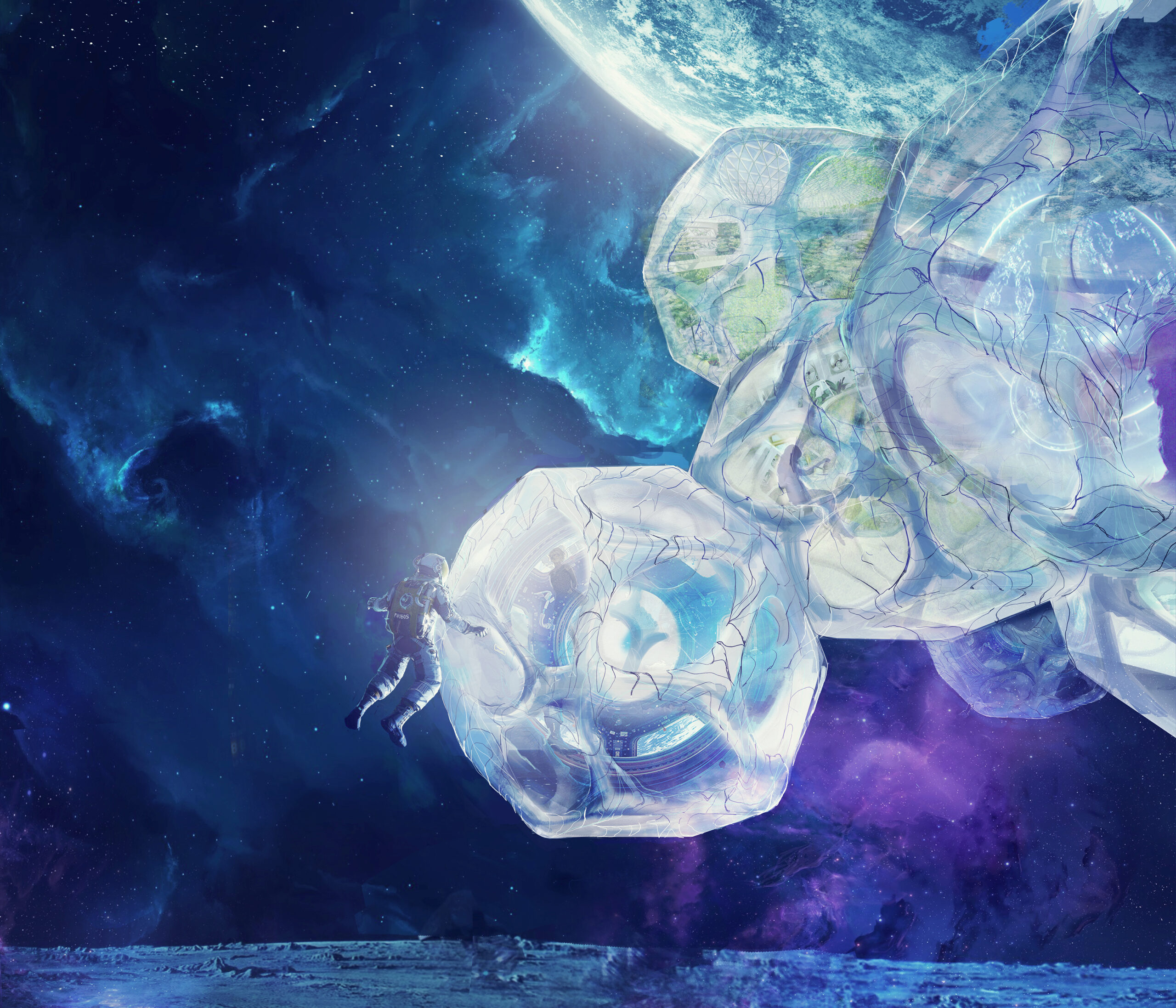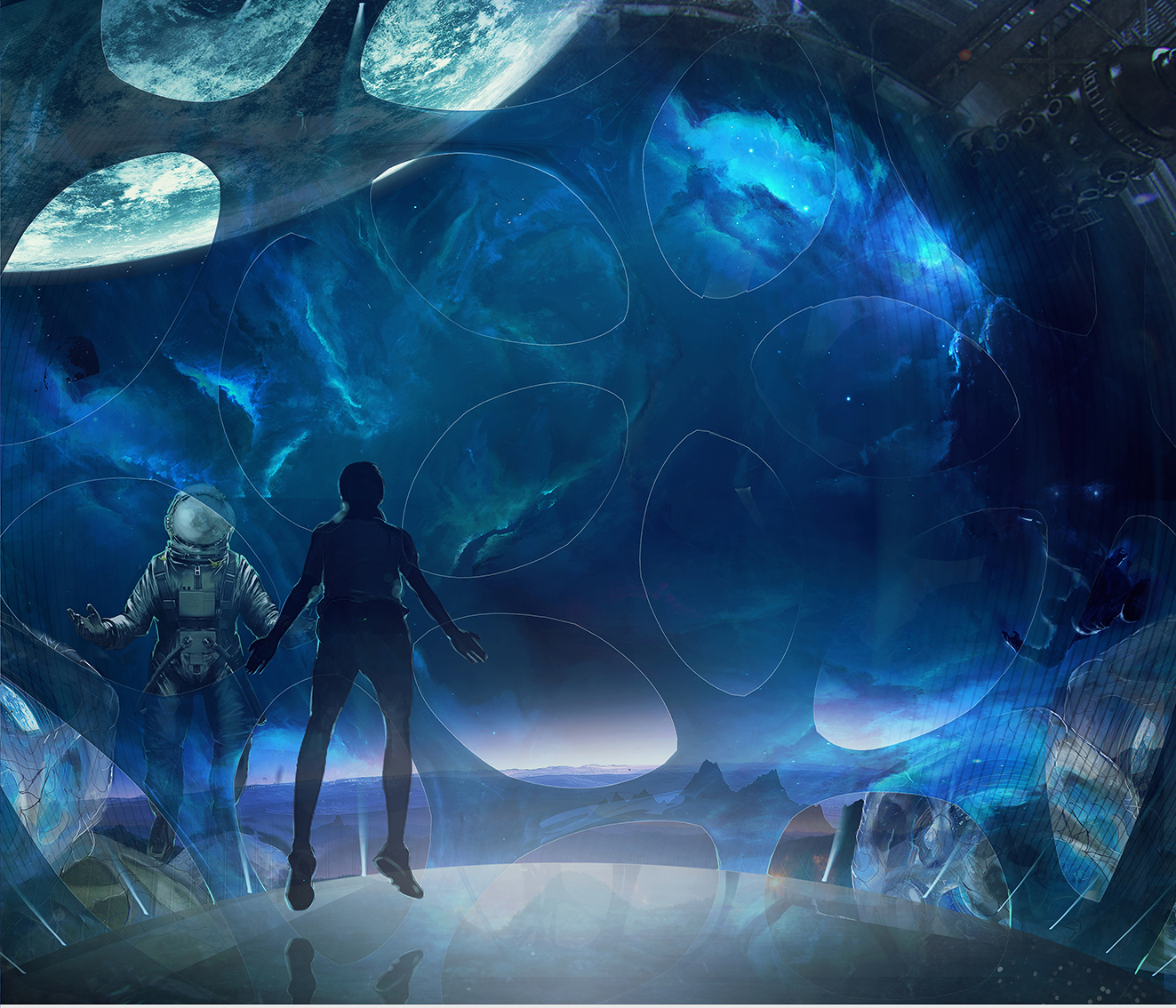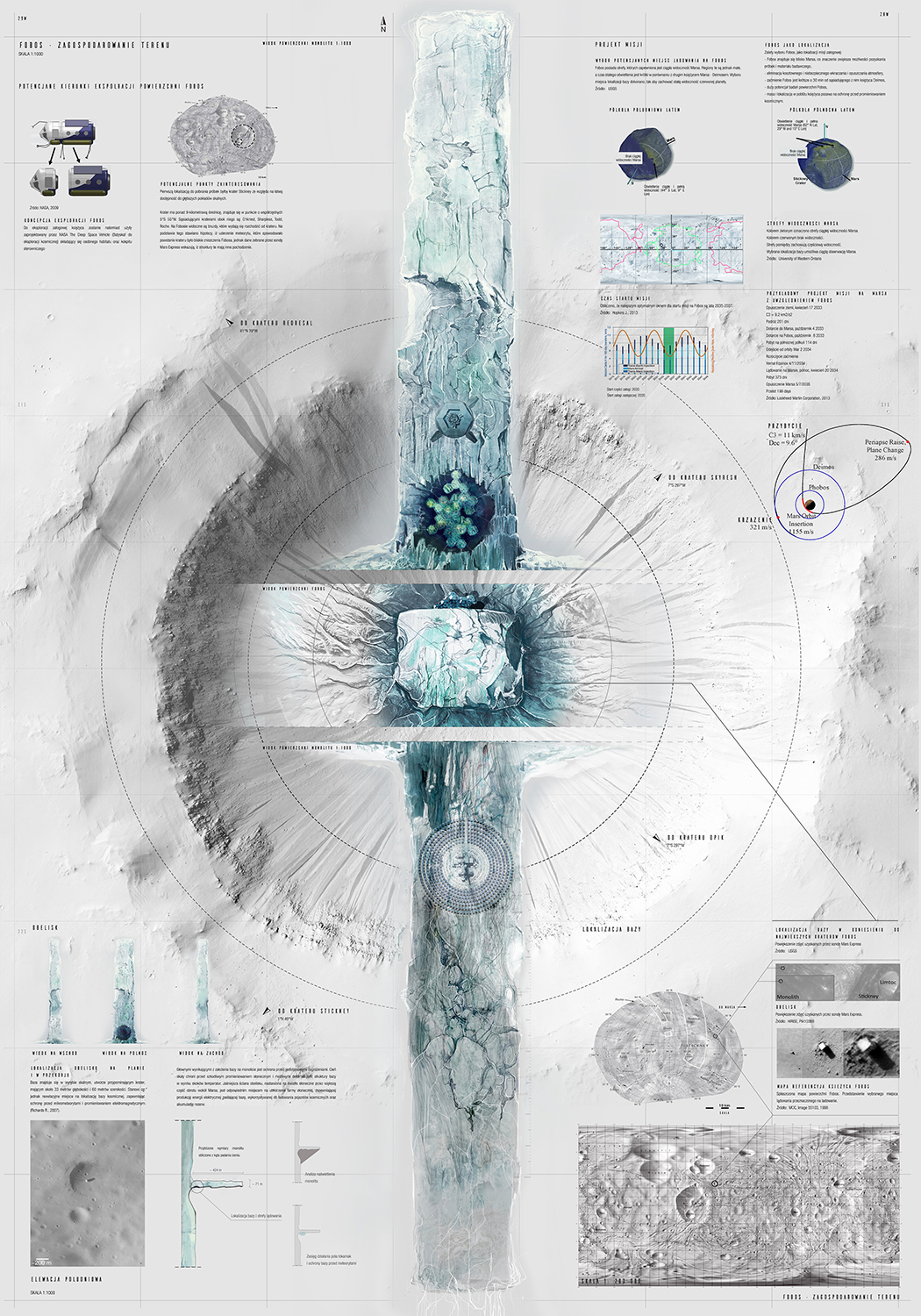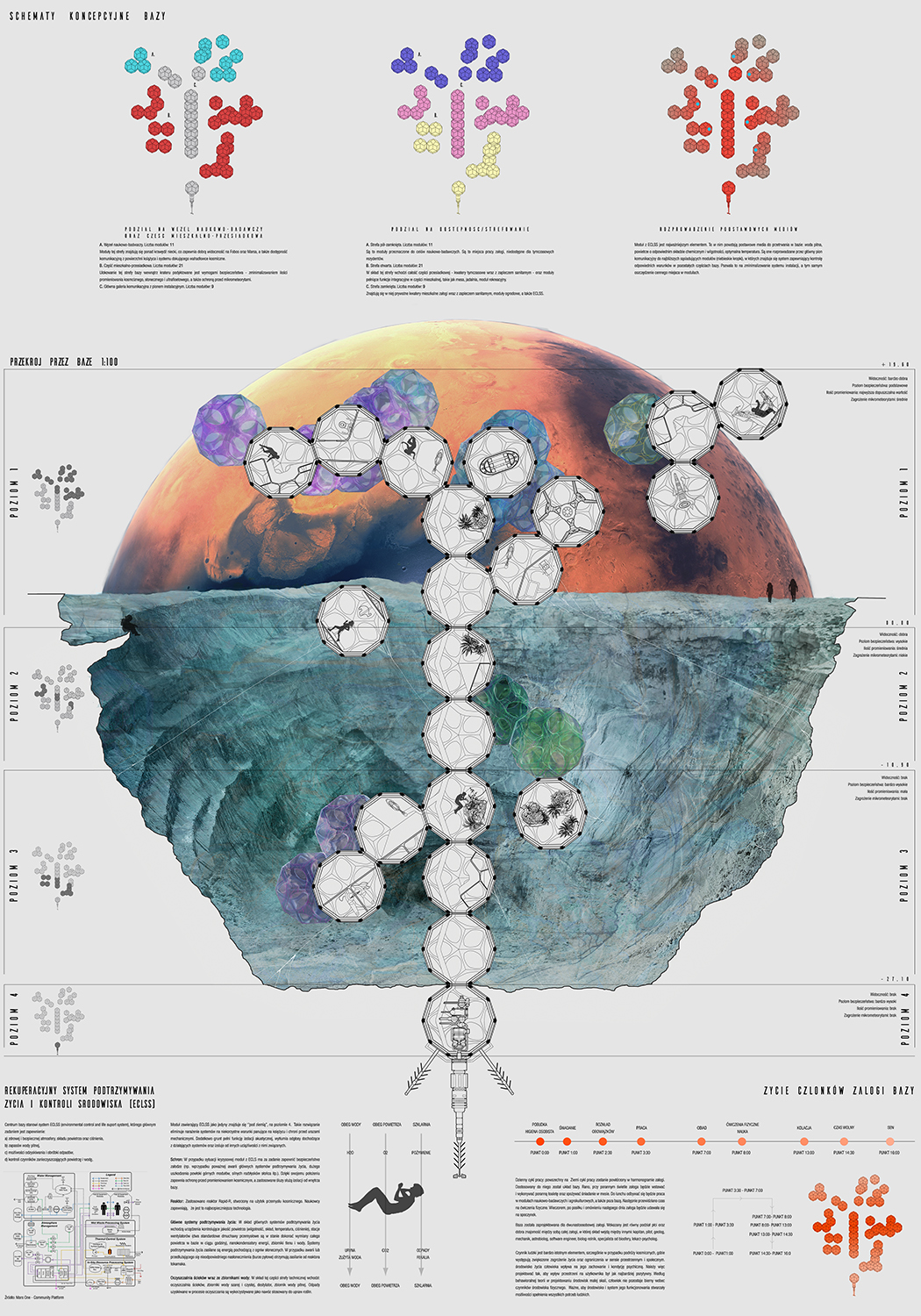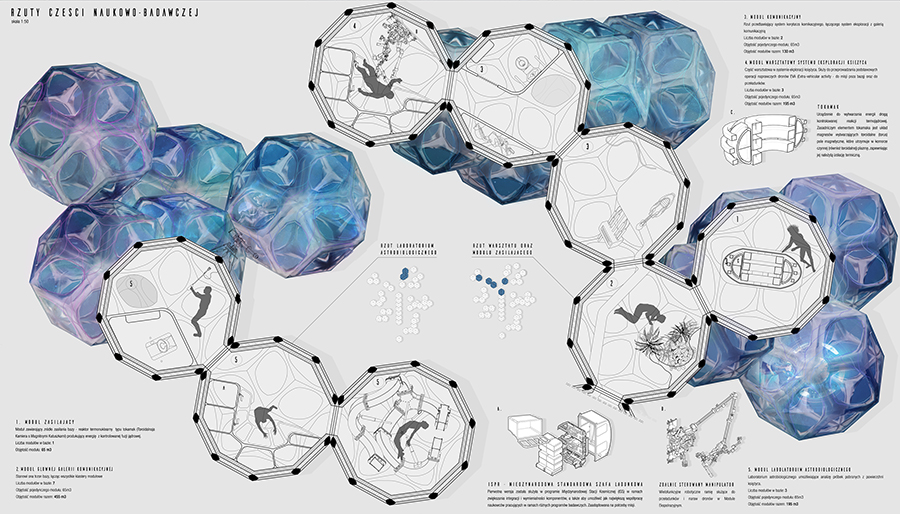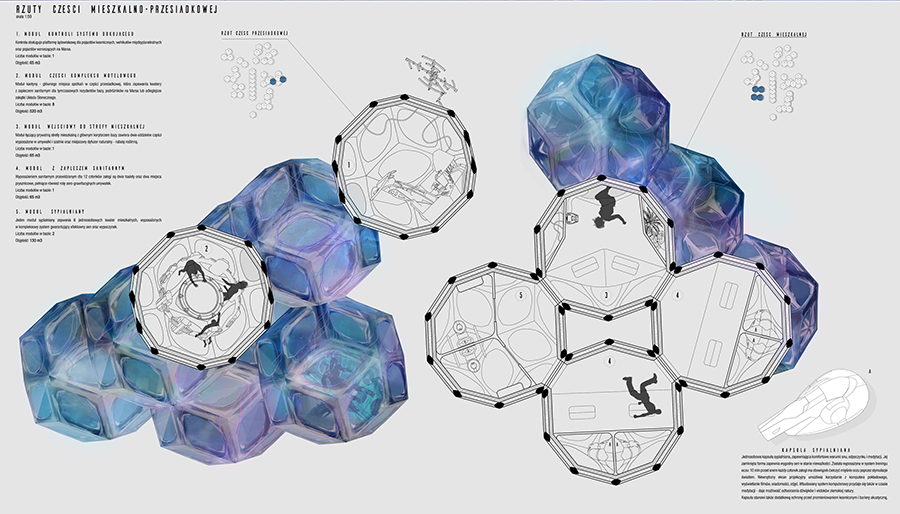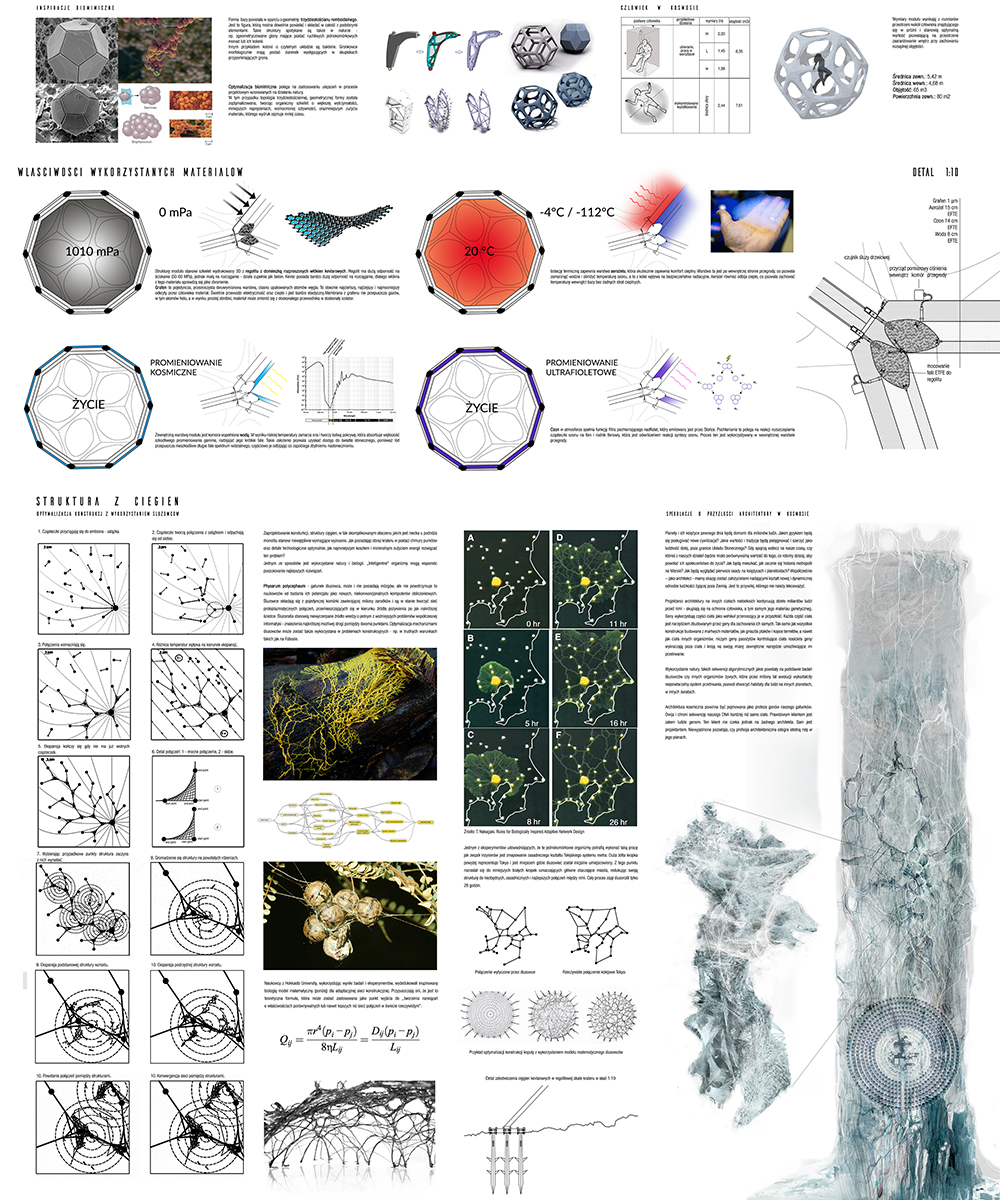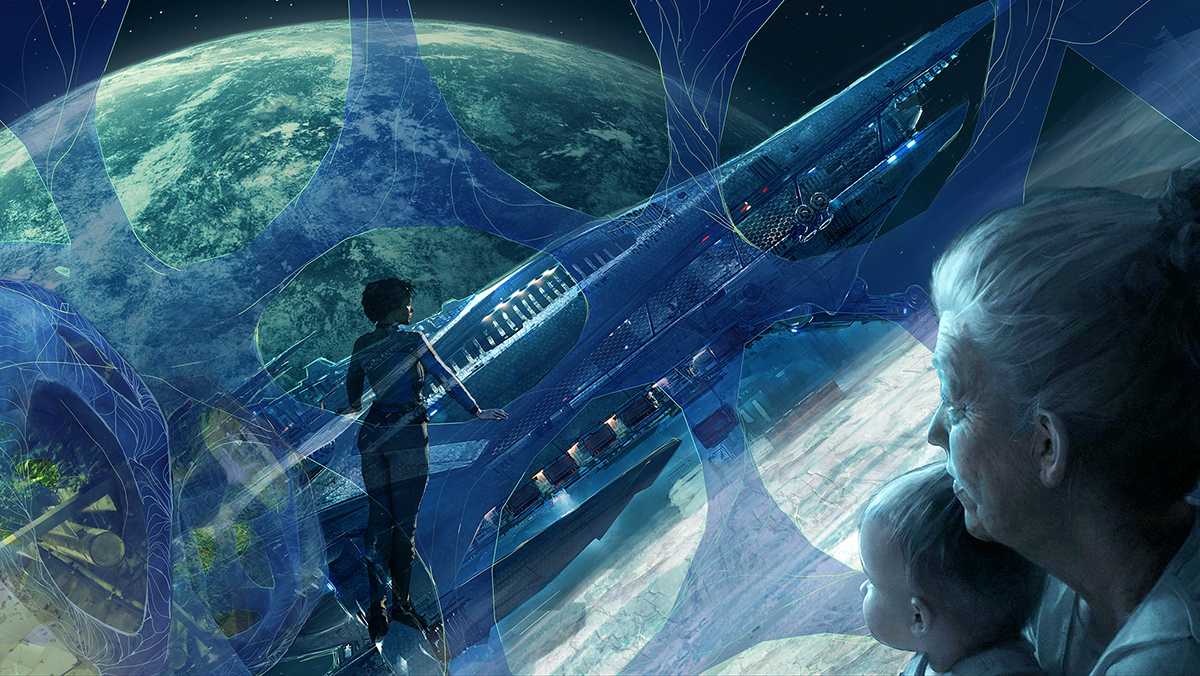Architects now have the opportunity to become founders giving form and architectural expression to a new, dynamic branch of humanity living beyond the Earth; to leave their mark on a future in which planets and their moons will be home to millions of people.
The subject of the thesis is the conceptual design of a base on the moon of Mars – Phobos. The habitat was designed in specific conditions of vacuum and weightlessness. The base was placed in a trough-like rock formation at the foot of a monolith and consists of modular regolith structures printed in 3D technology. The living and dining area is dealt with in detail, the living quarters of the residents, as well as the area serving tourists heading to the Red Planet or further into the Solar System.
